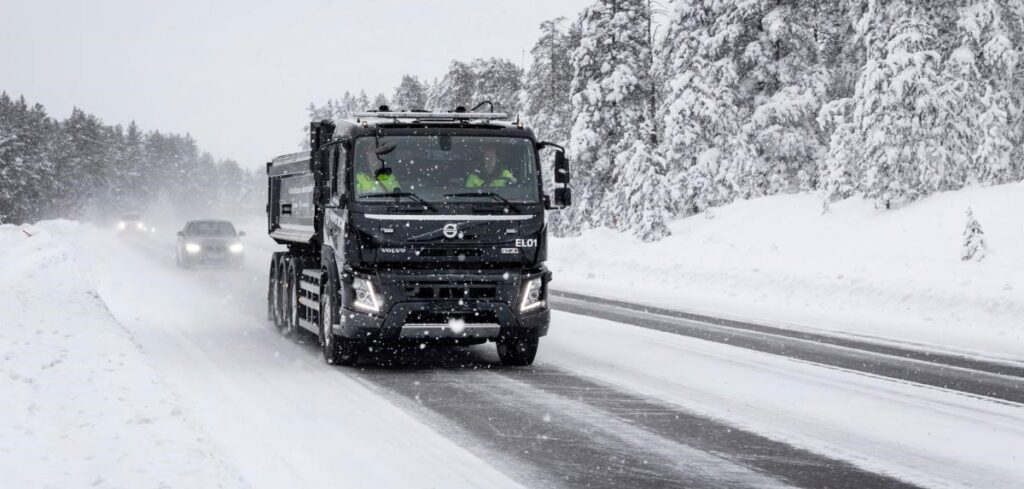Vattenfall, Volvo Trucks and ABB, together with mining company Kaunis Iron and the Nordic region’s largest independent dealer of Volvo trucks and buses, Wist Last och Buss, recently conducted a grueling 300km electric truck test in polar temperatures.
The test aimed to understand whether it is possible to replace diesel-powered transport of 14-ton truckloads of iron ore ‘sludge’ with new electric trucks, in an environment where temperatures drop to -30°C – and if so, what electrical infrastructure it would require.
The experiment was held in Sweden’s uppermost region, well within the Arctic Circle, and lasted four weeks. It involved driving a battery-powered Volvo FMX truck from a base in Junosuando to the mine in Kaunisvaara, and then unloading the cargo in Pitkäjärvi, where the ore was transferred to rail for onward transport to Narvik. The overall trip encompassed 280km of frozen routes, which had until then only ever been navigated with diesel-powered vehicles.
According to the companies, the experiment exceeded expectations despite the extreme temperatures, which dipped to lows of -32°C at times, with the electric truck performing well throughout. “The electric truck is in many ways equivalent to the one I would usually drive, as it’s the same type of cab, just easier to navigate, with one button to go back and forth,” said Lino Martino, one of the truck drivers who participated in the test. “This new truck is so quiet, you cannot hear the engine even when under heavy loads. And the vibrations are way less noticeable than with a diesel vehicle, so it’s without doubt a more convenient work environment to operate in.”
However, the companies admit there are challenges still to be resolved. One is battery range: it was necessary to take a break to charge the truck, using charging infrastructure and power supplied by Vattenfall. This happened at both the mine and the transfer station, to guarantee sufficient range to make the return leg of the journey.


